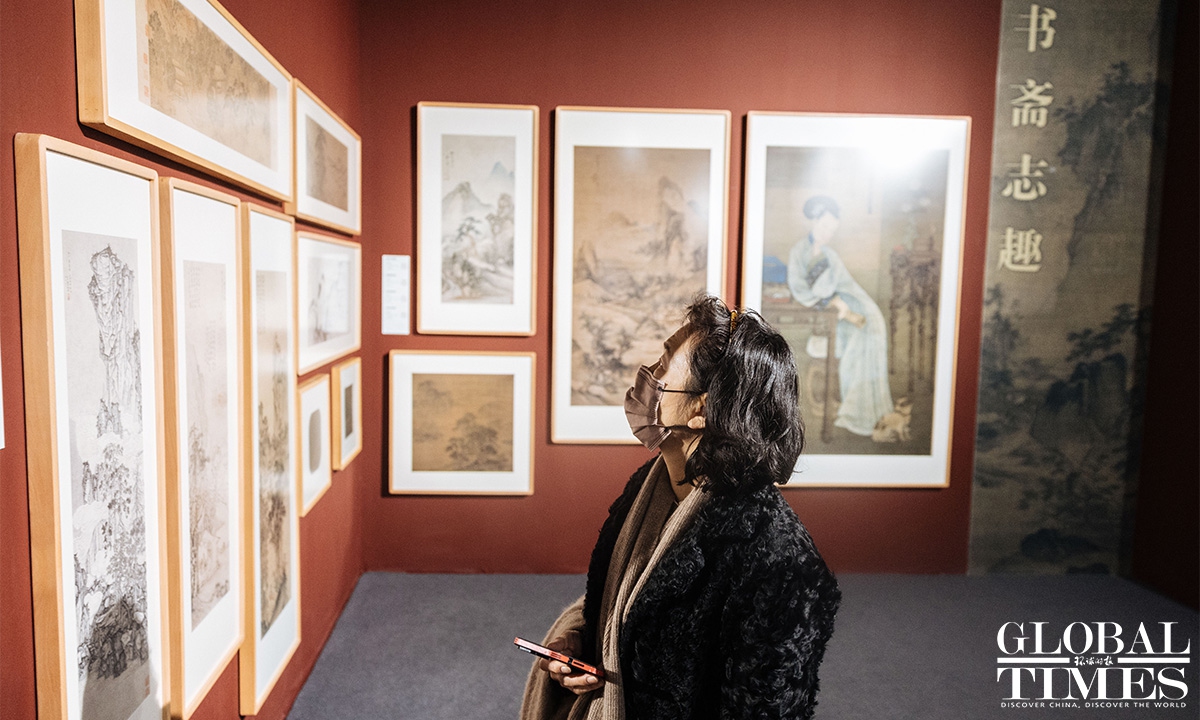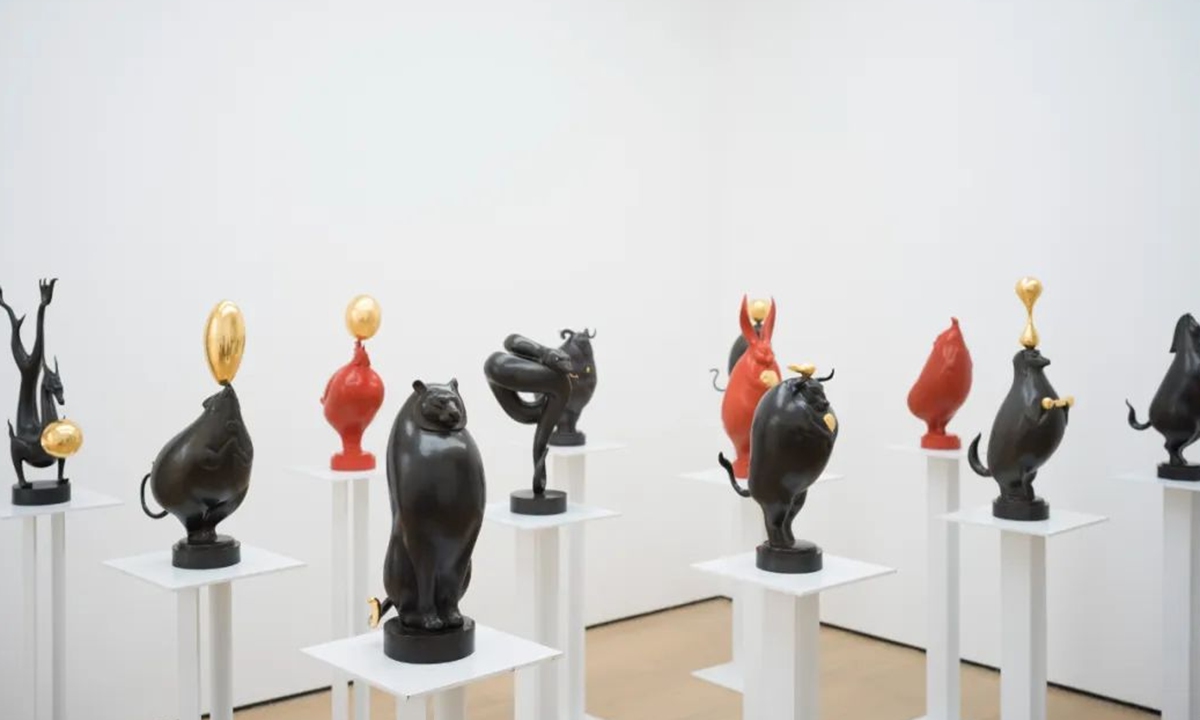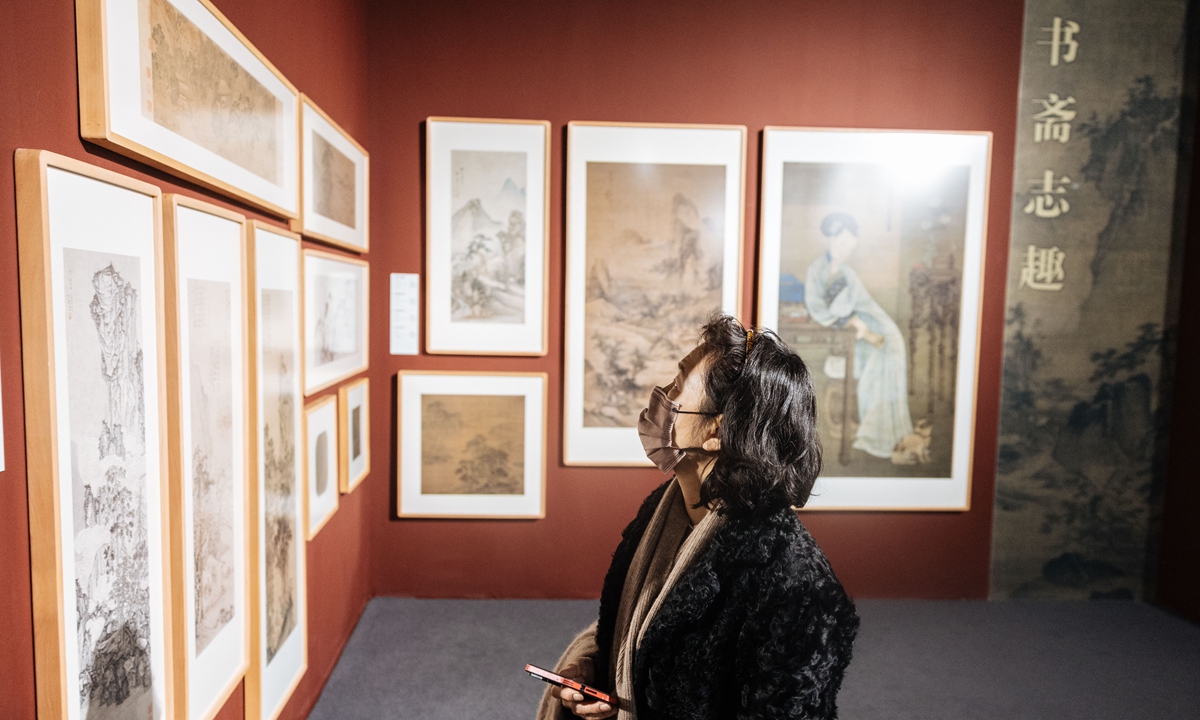
The Thematic Exhibition of Comprehensive Collection of Ancient Chinese Paintings at Beijing World Art Museum. Photo: Li Hao/GT
It is not the one housed in the British Museum in London, but a digitized version on display as part of the Thematic Exhibition of Comprehensive Collection of Ancient Chinese Paintings at Beijing World Art Museum.
With deep exploration of the compilation and publishing results of the Comprehensive Collection of Ancient Chinese Paintings, the exhibition "selects works under the theme of reading" and takes the compilation process of the collection as its main running line, Gao Jing, the curator of the exhibition, told the Global Times.
The Comprehensive Collection of Ancient Chinese Paintings, a project by Zhejiang University and Zhejiang Provincial Administration of Cultural Heritage, is by far the world's most comprehensive collection of pictures of paintings in ancient China. In the course of 18 years, it covers over 12,000 pieces of Chinese paintings on paper, silk (including brocade and damask), linen, and other materials from 263 museums and other cultural institutions at home and abroad. The project covers most of the extant national treasures throughout history.
Such a large-scale challenging global project, a remarkable achievement of the cooperation between Zhejiang and the world, is an expression of humanity's determination to preserve, inherit, and popularize civilization. They are the world's most complete and most extensive collections of illustrated Chinese paintings to date.
Taking the precious "Admonitions of the Instructress to the Court Ladies" as an example, although the British Museum was very cooperative and sent pictures of the Chinese cultural treasure, they were still not good enough to meet the requirements of the project, said Yu Changwei, the graphic editor of the Comprehensive Collection of Ancient Chinese Paintings. Yu and his colleagues had to spend time and effort in post-editing, printed one after another, and finally found the one that can be said to be good.
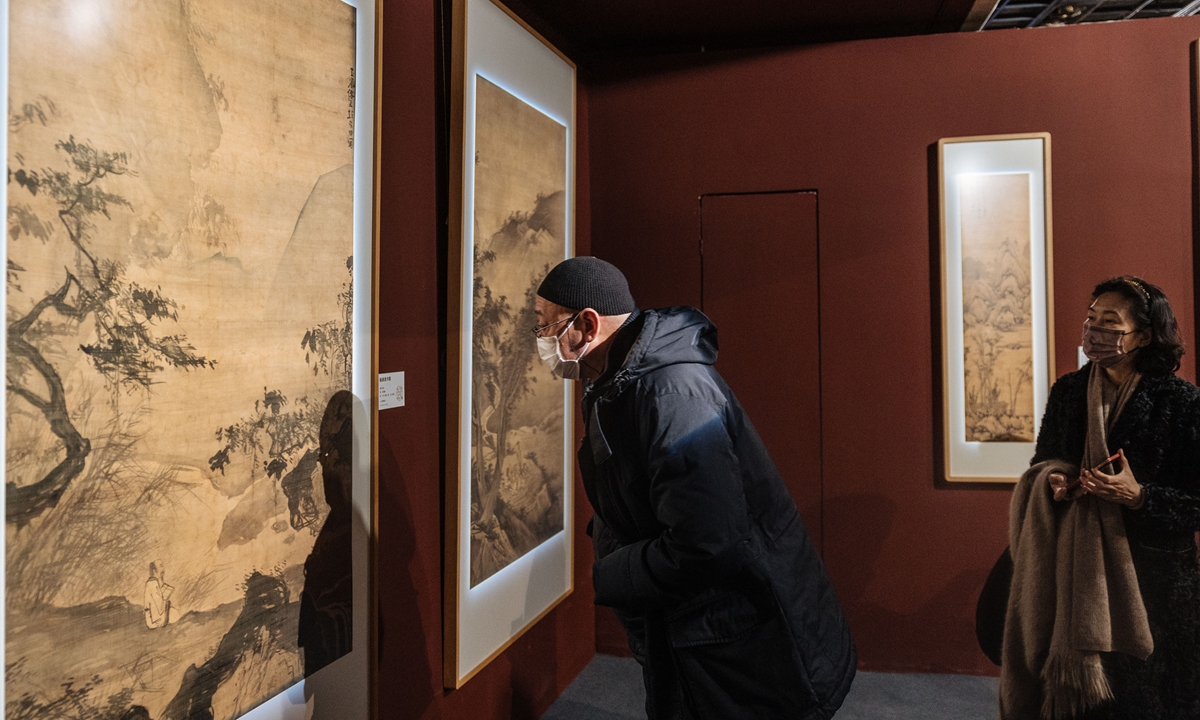
The Thematic Exhibition of Comprehensive Collection of Ancient Chinese Paintings at Beijing World Art Museum. Photo: Li Hao/GT
Since the project's very beginning, the world's most advanced photography technology and digital scanning have been introduced to copy and store the data of these included art pieces. For the audiences, the project provides them with an accurate and clear viewing experience, and some images have been partially enlarged to reveal many details that are difficult to detect in the original work. Through the application of digital technology, the team has also successfully identified and extracted images, inscriptions, and seals that were originally denuded and dull and difficult to discern with the naked eye from many ancient paintings.
Detailed digital files are established one by one, so that for the first time, fine Chinese paintings scattered around the world can obtain "digital substitutes" that are infinitely close to the original works, opening a new window and space for research and innovative use.
The publishing of the Comprehensive Collection of Ancient Chinese Paintings helps "solve the lack of systematic collecting ancient Chinese paintings for the academic circle and can better study the cultural genes and spiritual codes of Chinese civilization from paintings, while also serving to the popularization of China's fine traditional culture," Chen Ye, a professor at Zhejiang University, told the Global Times.
As seen by the Global Times reporters, these high-definition prints and paintings from China's various dynasties, either Song (960-1127) or Qing (1644-1911), depict the elegant and vibrant life of the then people and scholars in the landscape of ink and water, civil culture, lifelike birds, animals, fish, and insects, unique plum, orchids, bamboo, and more.
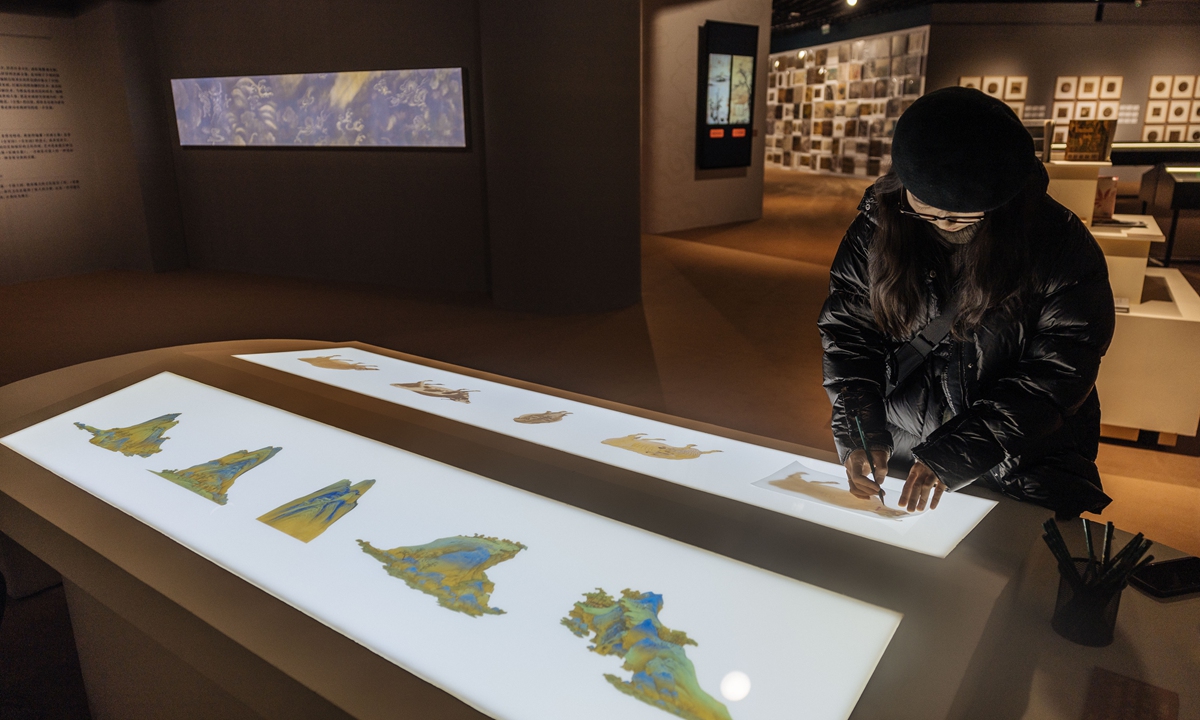
The Thematic Exhibition of Comprehensive Collection of Ancient Chinese Paintings at Beijing World Art Museum. Photo: Li Hao/GT
In four sections, "Elegance in Reading," "Interest in Study," "Appreciation of Classics," and "Appreciating the Past and Creating New Ones," the exhibition displays various reading images and scenes the paintings portrayed, hoping that the audiences can read context transcending time and space through paintings, added Gao.
The integration of classic paintings and reading "allows the public to enter the Chinese cultural system, experience and inherit Chinese culture," Wu Hongliang, president of Beijing Fine Art Academy, told the Global Times. Starting from the Complete Collection of Song Dynasty Paintings, the Comprehensive Collection of Ancient Chinese Paintings is "not only about these paintings themselves but extends to the acknowledgment of Chinese people toward reading and culture inheritance."
The exhibition is set to run until May 5th.

